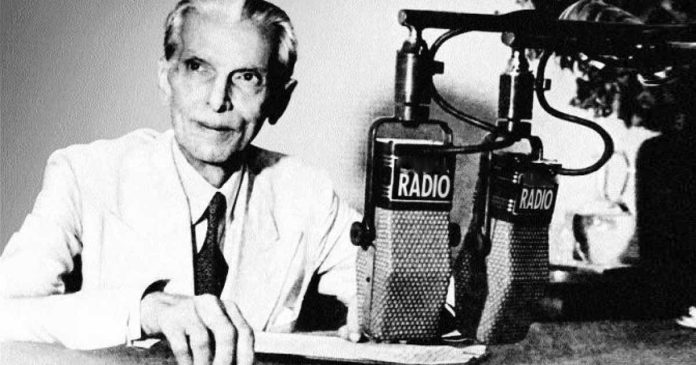The first privately owned FM radio station in Pakistan, FM 100, was launched in Karachi in 1995. This marked the beginning of a wave of radio stations across the country, with each major city and region establishing its own stations to cater to local audiences. Today, radio has become a popular medium for entertainment, news, and information dissemination in Pakistan.
However, the journey of radio in Pakistan has not been without its challenges. Some of the key challenges faced by radio stations in the country include:
Regulatory Framework:
The regulatory framework for FM radio in Pakistan has been a challenge for the industry. The licensing process has often been lengthy and complex, creating barriers for new entrants and hindering the growth of the sector. Moreover, the restrictions on content and programming have at times, limited the creative freedom of radio stations.
Financial Viability:
Sustaining the financial viability of FM radio stations has been a challenge. Advertising revenues are the primary source of income for radio stations, but the competitive nature of the market and economic fluctuations can impact revenue generation. Many stations have also faced difficulties in attracting advertisers, particularly small and medium-sized enterprises.
Limited Spectrum Allocation:
The allocation of radio spectrum has been limited in Pakistan. This has resulted in congestion in major cities, making it difficult for new stations to secure frequencies. The lack of available spectrum has led to competition for frequencies, causing interference and signal quality issues.
Infrastructure and Technical Challenges:
FM radio stations require robust infrastructure and technical support to ensure seamless broadcasting. However, the availability and maintenance of transmission equipment, studios, and power supply can be a challenge, especially in remote or underdeveloped areas. Adequate investment in infrastructure is crucial to enhance the reach and quality of radio services.
Competition from Digital Platforms:
The rise of digital platforms, such as online streaming and social media, has posed a challenge to FM radio in Pakistan. These platforms offer alternative sources of entertainment and information, attracting a portion of the audience that would traditionally tune in to radio stations. Radio stations need to adapt and embrace digital technologies to stay relevant and engage with their audiences effectively.
Despite these challenges, FM radio has managed to thrive in Pakistan, contributing to the diversity of media and serving as a platform for entertainment, news, and community engagement. The industry continues to evolve, with radio stations exploring innovative programming, partnerships, and digital integration to overcome challenges and stay competitive in the changing media landscape.
It is important for the government and regulatory authorities to address the challenges faced by FM radio stations, including streamlining licensing processes, providing spectrum allocation, and promoting a conducive business environment. By addressing these challenges, the radio sector in Pakistan can flourish further and continue to serve as a vital medium of communication and entertainment for the Pakistani population.
In times of crisis, such as pandemics and natural disasters, FM radio has proven invaluable for communication and information dissemination. With its wide reach, accessibility, and ability to provide real-time updates, FM radio plays a crucial role in keeping communities informed, connected, and resilient. This article highlights the significant role of FM radio in both pandemics and disaster management, underscoring its importance in times of emergency.
During Pandemics:
Reliable Source of Information:
FM radio stations serve as a reliable source of information during pandemics, providing accurate updates on the situation, preventive measures, and guidelines from health authorities. With the ability to reach a wide audience, including those without internet access or digital devices, FM radio ensures that vital information reaches all segments of society, bridging the digital divide.
Language and Cultural Relevance:
FM radio broadcasts in local languages and dialects, catering to the specific needs and cultural context of the affected communities. This linguistic relevance enhances the effectiveness of communication, making it easier for listeners to understand and follow guidelines, thus promoting public health measures effectively.
Addressing Misinformation:
In times of pandemics, misinformation and rumours can spread rapidly, leading to confusion and panic. FM radio stations play a crucial role in countering misinformation by providing fact-based reporting, debunking myths, and disseminating verified information from trusted sources. This helps build trust in official guidance and promotes responsible behaviour among the population.
Public Service Announcements:
FM radio stations often collaborate with health authorities and government agencies to broadcast public service announcements (PSAs) related to pandemics. These PSAs cover a range of topics, including hygiene practices, social distancing guidelines, testing centres, vaccination campaigns, and mental health support. The repetitive nature of radio broadcasts ensures that the messages are reinforced and widely disseminated.
During Disaster Management:
Emergency Alerts and Warnings: FM radio plays a critical role in disseminating emergency alerts and warnings during natural disasters such as hurricanes, earthquakes, and floods. Through their wide coverage area and immediate broadcasting capabilities, FM radio stations provide real-time updates on weather conditions, evacuation procedures, emergency shelters, and other vital information. This helps communities make informed decisions and take necessary precautions in a timely manner.
Coordination and Support:
FM radio stations act as coordination hubs during disaster management, facilitating communication between disaster response agencies, relief organizations, and affected communities. Radio hosts and volunteers provide information on relief efforts, donation centres, medical services, and other support services. Additionally, call-in programs allow affected individuals to share their needs, concerns, and experiences, fostering community engagement and support.
Community Resilience:
FM radio promotes community resilience during disasters by providing a sense of connection, support, and hope. Through local news, stories of resilience, and community-driven initiatives, radio stations play an essential role in uplifting the spirits of affected individuals and fostering a collective response to the crisis. Radio programs that offer music, entertainment, and engaging content also provide a respite from the challenges and stress of the disaster.

Post-Disaster Recovery:
After the immediate crisis has passed, radio stations continue to play a crucial role in post-disaster recovery. They broadcast information about available resources, reconstruction efforts, and psychological support services. This helps affected communities navigate the recovery process, access assistance, and rebuild their lives.
In both pandemics and disaster management, radio serves as a lifeline for communities, providing vital information, support, and a sense of togetherness. Its accessibility, language relevance, and real-time updates make it an indispensable medium for communication during emergencies. As technology advances, it is important to recognize and strengthen the role of radio, ensuring its continued effectiveness in serving communities in times of crisis.
In times of disaster, when communication channels are disrupted, one medium has proven to be a reliable source of information and connection for affected communities—FM radio. With its wide reach, simplicity, and resilience, FM radio has played a vital role in disaster management, serving as a lifeline during some of the most challenging times in history. This article explores the importance of FM radio during disaster management, highlighting its historical significance and providing examples of its effectiveness.
History of FM Radio in Disaster Management:
FM radio, or frequency modulation radio, has a long-standing history as a trusted communication tool during emergencies. The development of radio technology dates back to the early 20th century, with advancements in the 1930s and 1940s. However, it was during World War II that radio’s potential for emergency communication began to be recognized.
During the war, the U.S. military utilized radio for aircraft communications due to its superior sound quality and resistance to interference. This breakthrough in technology laid the foundation for the use of radio in disaster management, enabling quick and effective dissemination of information during times of crisis.
Importance of FM Radio in Disaster Management:
Wide Reach and Accessibility:
FM radio has a broad coverage area, making it accessible to a large population, even in remote or underprivileged areas. During disasters, when power outages and infrastructure damage are common, FM radio stations can continue broadcasting through battery-powered transmitters, reaching communities that may have limited or no access to other forms of communication.
Real-Time Information:
FM radio provides real-time updates on weather conditions, evacuation procedures, emergency services, and relief efforts. Unlike other media channels that may require internet access or electricity, FM radio operates on basic radio receivers, making it a reliable source of information for those without internet connectivity or facing power disruptions.
Language and Cultural Relevance:
Local FM radio stations often broadcast in regional languages, catering to the specific needs and cultural context of the affected population. This ensures that critical information is delivered in a manner that is easily understood, increasing its impact and relevance in times of crisis.
Community Engagement and Support:
FM radio stations serve as a platform for community engagement, allowing affected individuals to share their experiences, concerns, and needs. Radio call-in programs enable two-way communication, providing a sense of connection and support during challenging times. Radio hosts and volunteers can also provide essential advice and guidance to affected individuals, fostering a community-driven response to the disaster.
Examples of FM Radio’s Effectiveness in Disaster Management:
Hurricane Katrina (2005):
When Hurricane Katrina struck the Gulf Coast of the United States, FM radio emerged as a critical lifeline for affected communities. Local radio stations, such as WWL-AM in New Orleans, provided continuous updates on evacuation routes, emergency shelters, and relief efforts. This enabled residents to make informed decisions and stay connected during the aftermath of the disaster.
Indian Ocean Tsunami (2004):
In the wake of the devastating tsunami that struck several countries in the Indian Ocean, FM radio stations played a crucial role in disseminating information to affected areas. In Tamil Nadu, India, community radio stations like Kadalosai and AID-India used FM radio to deliver warnings, safety instructions, and updates on relief efforts. This helped save lives and facilitated the coordination of rescue operations.
Earthquake in Haiti (2010):
Following the catastrophic earthquake in Haiti, FM radio played a significant role in providing vital information to the affected population. Stations like Signal FM and Radio Caribes provided updates on search and rescue efforts, medical services, and humanitarian aid distribution, helping survivors access the support they needed most.
The importance of radio in disaster management cannot be overstated. Its ability to reach a wide audience, provide real-time information, cater to linguistic and cultural needs, and foster community engagement makes it an invaluable tool during times of crisis. As technology advances, it is crucial to ensure that radio infrastructure remains resilient and accessible, enabling it to continue serving as a lifeline for communities affected by disasters worldwide.














